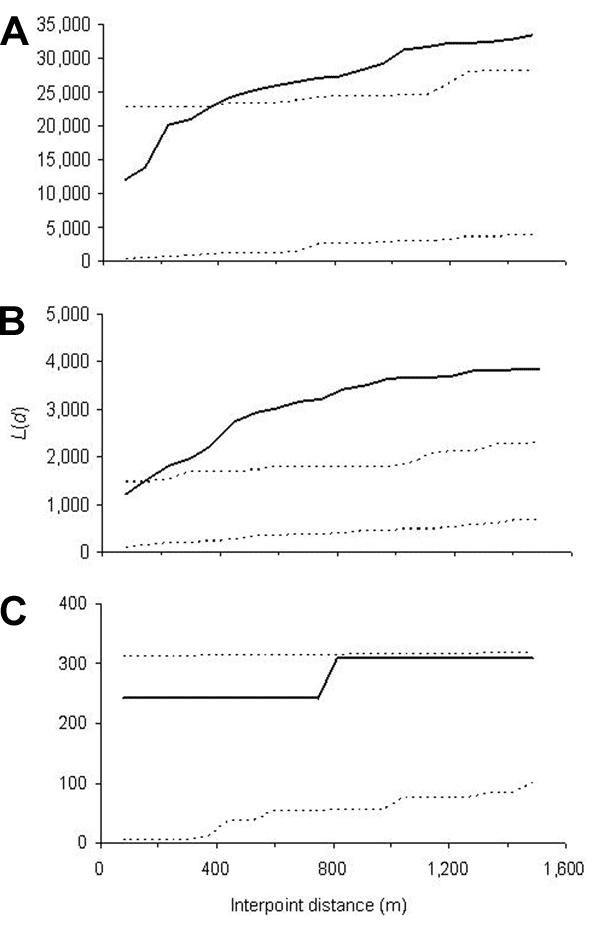Volume 11, Number 10—October 2005
Research
Plasmodium falciparum Spatial Analysis, Western Kenya Highlands
Figure 5

Figure 5. Results of weighted K function analysis on the global spatial clustering of Plasmodium falciparum infection intensities in Iguhu for age groups A) 0–9 years, B) 10–19 years, and C) >19 years in the July 2002 survey. The solid line is the observed value of the test statistic L(d) at a given distance d, and dashed lines indicate 95% confidence intervals.
1Current affiliation: Saga University, Saga, Japan.
Page created: February 22, 2012
Page updated: February 22, 2012
Page reviewed: February 22, 2012
The conclusions, findings, and opinions expressed by authors contributing to this journal do not necessarily reflect the official position of the U.S. Department of Health and Human Services, the Public Health Service, the Centers for Disease Control and Prevention, or the authors' affiliated institutions. Use of trade names is for identification only and does not imply endorsement by any of the groups named above.